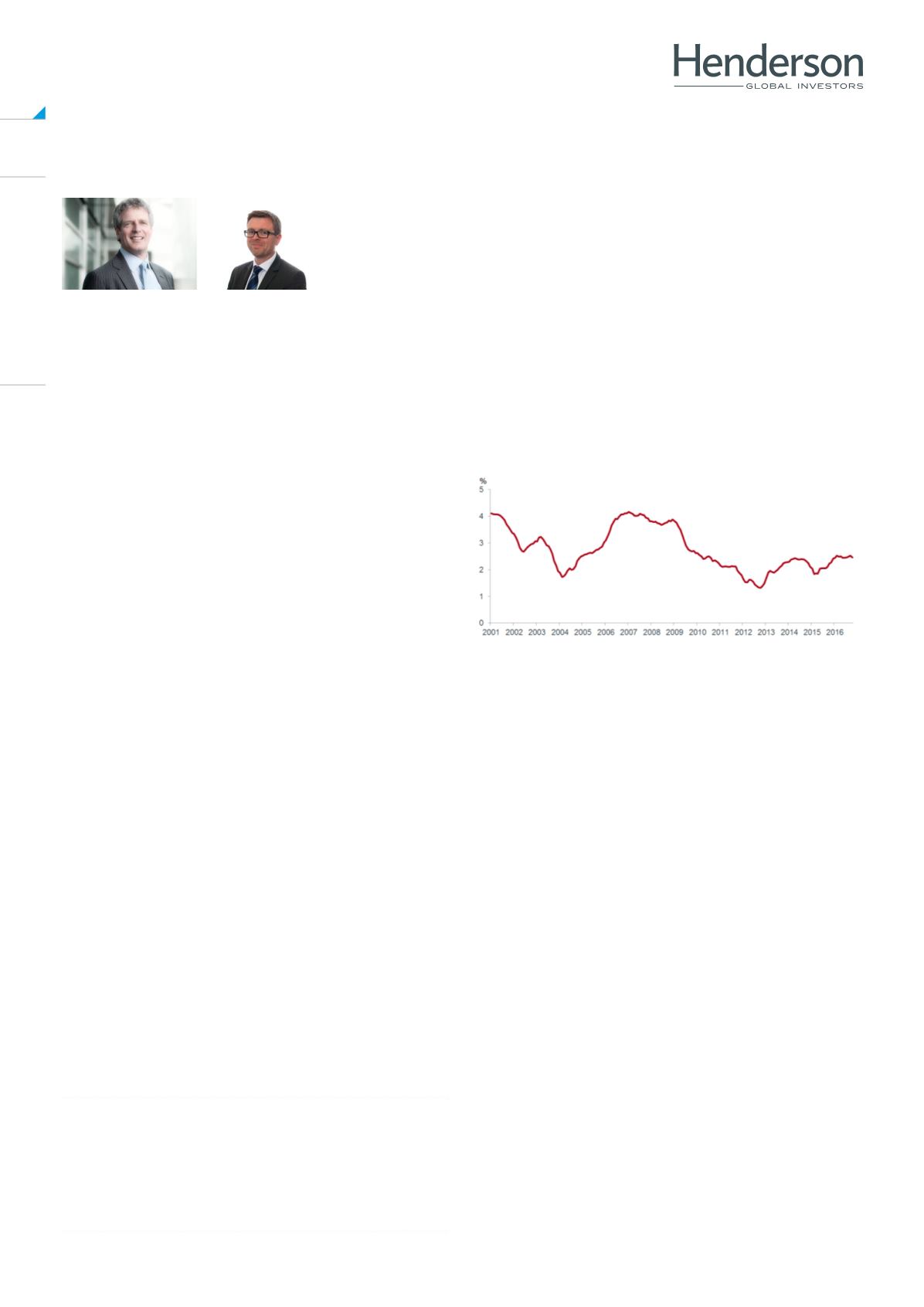
DIY Investor Magazine
/
Jan 2017
14
THE RETURN OF INFLATION IN 2017
WE HAVE BEEN WATCHFUL FOR THE RETURN OF INFLATION FOR SOME TIME NOW, WITH A HEALTHY SCEPTICISM
ABOUT THE “LOWER FOR LONGER …FOREVER” MANTRA.
Henderson Cautious Managed Fund
Managers Chris Burvill and Stephen Payne
That widely accepted viewpoint is now being questioned
as the evidence builds that the days of disinflation are
behind us. Inflation is beginning to come through in
developed economies and bond markets have been
quick to notice it.
Lower for Longer – no Longer
Deflationary forces have been significant in the global
economy over the last decade but these are now on the
wane, indeed even reversing in some cases.
The bargaining position of labour (the ability of workers
to negotiate better terms of employment/higher pay)
has been weak for many years. This has resulted in
widening income inequality, which has manifested itself
in the changing political landscape.
In the West, we have already seen the backlash
against the political establishment through the rise of
populism. Voters (ie. workers) have had enough. This
coincides with a tightening in labour markets, with falling
unemployment making it more difficult for firms to recruit
workers, which tends to push up wages.
In the US, wage inflation is already on the rise, see
chart 1, while here in the UK, employment is at record
levels. Economies are close to full employment, a
situation where anyone who is able and willing to
work is employed. And this is before the squeeze on
immigration comes into play, following Donald Trump’s
election and Brexit.
Add in demographic shifts as the number of retirees
rises relative to the number of people actively in work
and the stage is set for persistent wage inflation after
many lean years.
Chart 1 – US wage inflation is increasing
IN THE WEST, WE HAVE ALREADY SEEN THE
BACKLASH AGAINST THE POLITICAL ESTABLISHMENT
THROUGH THE RISE OF POPULISM
The making of Trumpflation
Another key disinflationary pressure has been
globalisation; free trade has increased the volume and
variety of goods available, but has also suppressed
prices. Chart 2 shows the impact on the price of food
and drinks in the UK.
We in the West have benefitted as consumers, but have
lost out as wage earners.
China has been exporting deflation to the world by
devaluing its currency, although this is changing as the
supply of cheap migrant labour to the country’s cities
slows.
Wages have soared in China, and debt, which has
subsidised the increase in production capacity, has
ballooned.
Trump’s proposed protectionist policies in the US are
a reaction to China’s actions, but putting restrictions
on trade and adding import tariffs adds to inflationary
pressures.


